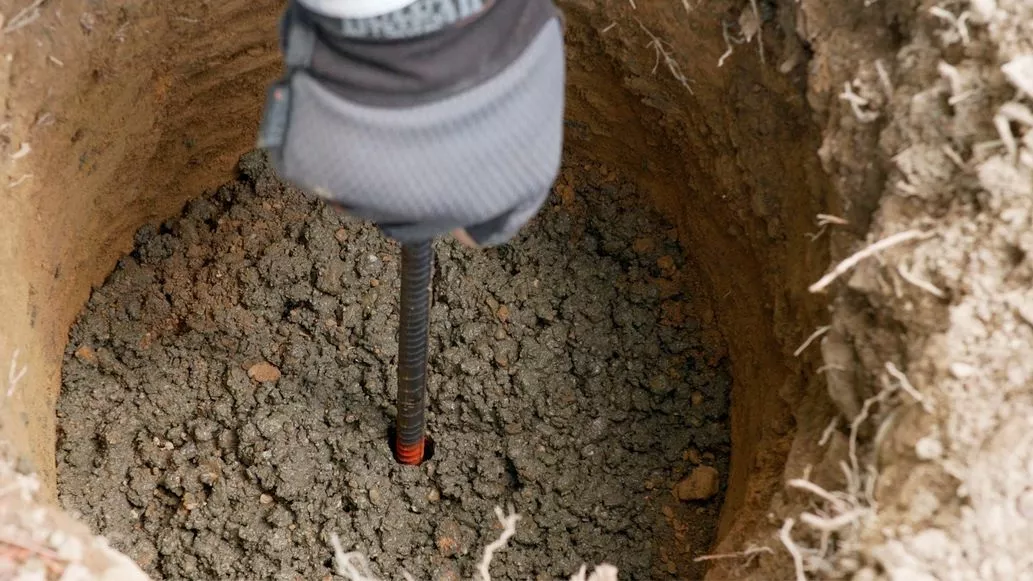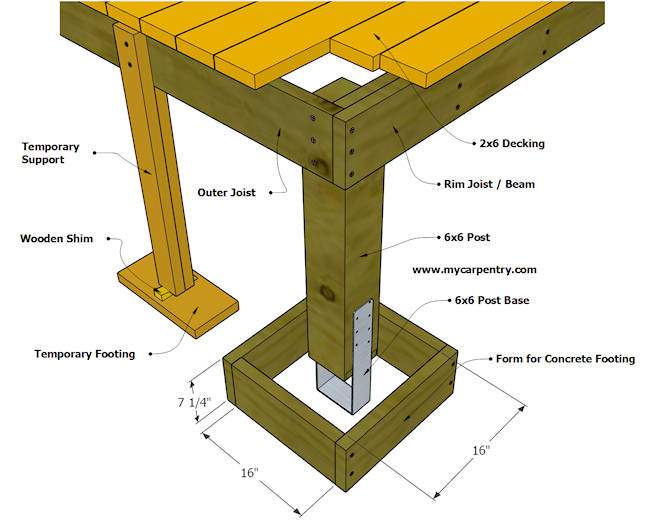Structural Stability Matters: Selecting the Right Deck Footings for Your Outdoor Task
Structural Stability Matters: Selecting the Right Deck Footings for Your Outdoor Task
Blog Article
Specialist Tips for Putting Up Deck Footings to Assistance Your Outdoor Area
When it comes to developing a deck, one of the most essential aspects to think about is the installation of correct footings. These grounds are the foundation upon which your exterior room will rest, providing stability and assistance for years to come. What precisely does it take to mount deck grounds correctly?
Significance of Appropriate Deck Footings
Correct deck grounds are essential for making sure the stability and long life of your outdoor area. Without strong and appropriately mounted footings, your deck might end up being unsteady, leading to security hazards and costly repair services.
In addition to security, proper deck grounds likewise contribute to the durability of your outside space (Deck Footings). Grounds that are developed and created to withstand the aspects and dirt problems in your area will help prevent the deck from clearing up or shifting gradually. By making certain the footings are properly sized and installed, you can decrease the risk of damages to the deck framework, prolonging its life expectancy and decreasing the requirement for costly repairs or substitutes

Selecting the Right Kind Of Footings
When choosing the ideal kind of grounds for your deck, it is important to take into consideration elements such as soil problems, neighborhood building ordinance, and the total design of your exterior space. The kind of footing you choose will play a critical function in making sure the stability and longevity of your deck.
One typical kind of footing is the concrete ground. Concrete footings appropriate for many dirt conditions and give exceptional support for decks. They are normally installed listed below the frost line to avoid shifting and clearing up as a result of cold and thawing cycles. An additional option is helical piers, which are suitable for areas with unstable dirt or high water tables. These piers are screwed right into the ground and offer solid support for the deck.
In many cases, you may require to use specific footings, such as stack grounds or deep structures, if you are building a multi-level or big deck. These footings are made to disperse the weight of the deck over a larger area, making certain security and avoiding settling or sinking.
Before choosing a sort of footing, it is necessary to speak with local building regulations and policies to guarantee conformity. Additionally, consider the layout and planned use your exterior room. Variables such as the dimension, form, and load-bearing requirements of your deck will influence the type of footing that is most ideal.
Preparing the Ground for Footing Setup
To correctly prepare the ground for footing setup, it is very important to evaluate the dirt conditions and take required steps to ensure security and sturdiness of the deck. The primary step is to dig deep into the location where the grounds will certainly be mounted. The deepness of the excavation will certainly rely on the frost line in your website here area and the particular needs of the deck design. It is vital to get rid of any vegetation, rocks, or debris from the excavation to make certain a solid structure.
Once the location has been dug deep into, the following step is to portable the soil. This can be done utilizing a plate compactor or by using a hand meddle. Compacting the soil helps to get rid of any type of spaces or air pockets, which can result in working out and instability in time.
After condensing the soil, it is vital to lay a layer of gravel or smashed stone at the base of the excavation. This will provide drain and help to avoid water from pooling around the grounds, which can result in disintegration and instability.
Step-by-Step Overview to Installing Deck Footings
After appropriately preparing the ground for footing installation, the following action is to begin the process of installing deck grounds. This detailed overview will certainly supply you with a clear understanding of exactly how to mount deck grounds for your outside room.
Identify the area: Start by noting the placements of the deck grounds utilizing stakes and string. Guarantee that the locations align with the design and format of your deck.
Dig the holes: Make use of a post hole digger or an auger to dig the holes for the footings. The deepness and diameter of the holes need to be in accordance with neighborhood building regulations and the particular requirements of your deck style.
Degree the holes: Use a degree to guarantee that the openings are dug to the correct deepness and are degree with each various other. (Deck Footings)
Add gravel: Place a layer of crushed rock at the base of each opening to enhance drain and avoid the wood from decaying.
Place the footings: Put the grounds right into the holes, seeing to it they are level and plumb. Use a degree and a gauging tape to guarantee accuracy.
Secure the footings: Put concrete into the holes around the grounds, loading them to the top. Utilize a message degree to make certain the grounds stay level as the concrete collections.
Enable time for healing: Allow the concrete remedy according to the producer's directions before proceeding with the deck building.
Common Mistakes to Stay Clear Of Throughout Footing Setup
One essential facet to consider during the installation of deck footings is staying clear of typical blunders that can compromise the security and longevity of your outside space. While deck grounds might appear like a simple and basic part of the building and construction process, overlooking specific elements can lead to costly view it now repair services and potential safety and security threats down the line.

Additionally, disregarding to set up correct water drainage measures can create water to collect around the grounds, bring about rot, degeneration, and the ultimate weakening of the deck's structure. Using the wrong kind of footing material or failing to appropriately safeguard the footings can endanger their architectural stability.
To stay clear of these errors, it is crucial to seek advice from with an expert or follow industry standards to ensure correct ground installment. By doing so, you can guarantee the security and long life of your outdoor room, offering a delightful and risk-free atmosphere for several years to come.
Final Thought
To conclude, setting up proper deck footings is important for the stability and longevity of your exterior area. By selecting the right sort of grounds and appropriately preparing the ground, you can make certain a solid foundation for your deck. Following a step-by-step overview and staying clear of why not try these out usual errors during footing installment will even more improve the longevity and security of your deck.
Correct deck footings are essential for making certain the stability and durability of your outside space. The grounds offer as a link between the ground and the deck, enabling the weight of the deck and its owners to be spread equally right into the dirt.One usual type of footing is the concrete footing. Insert the footings: Put the grounds into the holes, making sure they are degree and plumb. Secure the grounds: Put concrete into the openings around the footings, loading them to the top.
Report this page